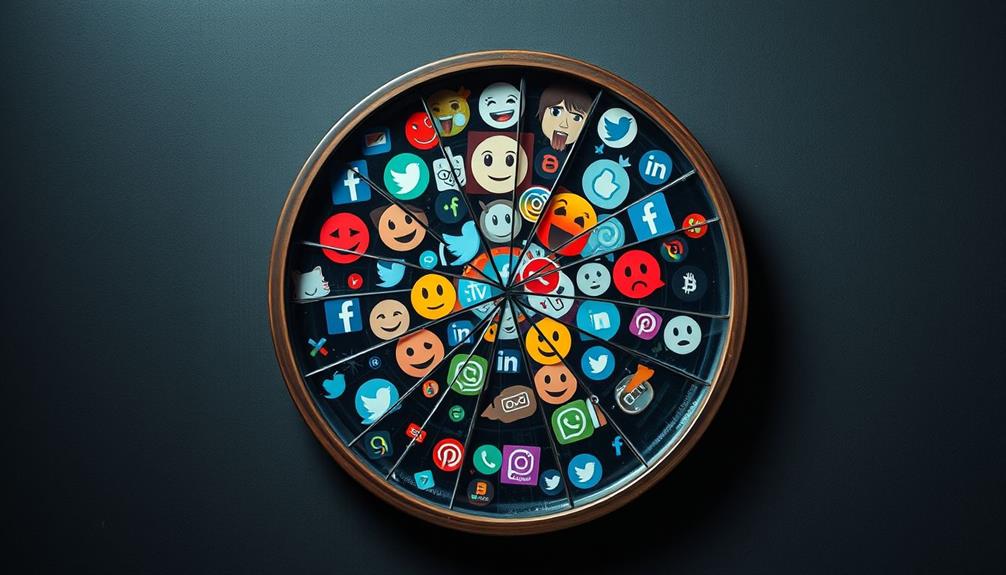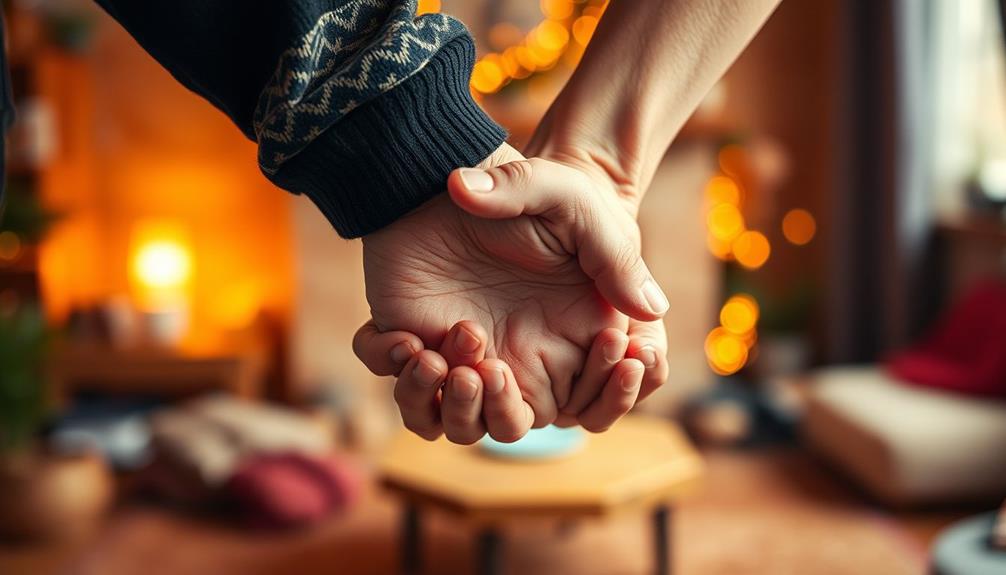Social media can heavily impact your BPD symptoms, often amplifying emotional instability and feelings of rejection. You might find that increased posting leads to frantic efforts to connect, which can result in impulsive actions like blocking others. This behavior is often a knee-jerk reaction to perceived criticism, providing only temporary relief. The online environment may heighten feelings of isolation and depression, complicating your emotional landscape. However, engaging in online support communities can foster connection and offer coping strategies to better manage these challenges. There's much more to explore about how these dynamics affect your mental health.
Key Takeaways
- Increased social media engagement can trigger emotional instability and feelings of abandonment in individuals with BPD.
- Blocking behavior often serves as an impulsive coping mechanism in response to perceived criticism or rejection online.
- Exposure to distressing content on social media heightens emotional struggles and increases the risk of suicidal thoughts.
- Unhealthy communication patterns online can lead to confusion, rejection, and exacerbate feelings of isolation and depression.
- Online support communities utilizing DBT principles can significantly improve emotional regulation and foster a sense of belonging for those with BPD.
Social Media's Role in BPD
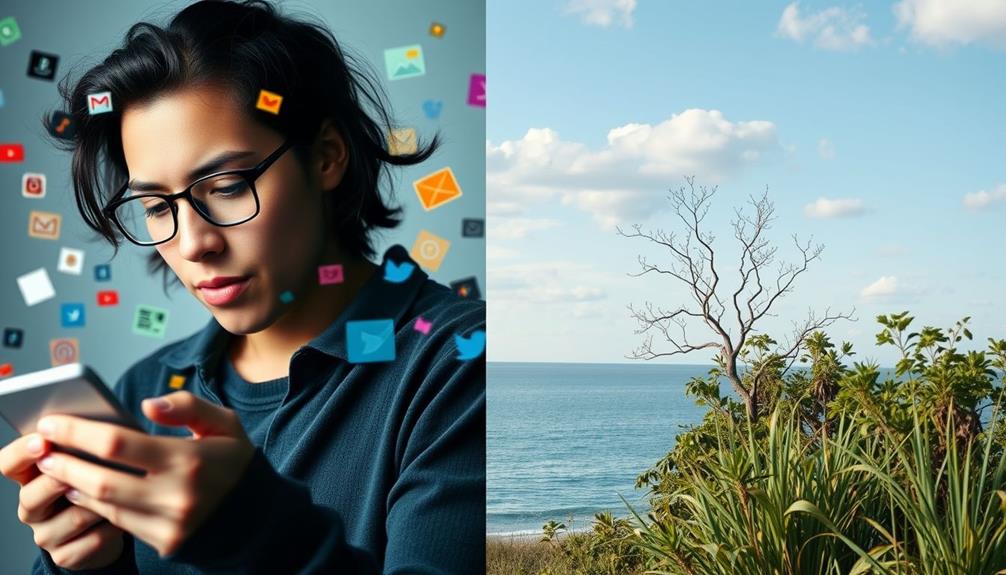
Social media plays a significant role in the lives of individuals with borderline personality disorder (BPD), often amplifying their symptoms. You might find that, with higher BPD traits, you post more frequently online, a behavior linked to emotional instability and a need for connection.
This increased online activity can sometimes exacerbate feelings of abandonment, leading to frantic efforts to maintain connections, which is a common symptom of BPD fear of abandonment. However, this increased activity can lead to unhealthy communication patterns, causing confusion and feelings of rejection in your interpersonal relationships.
You may struggle with impulse control, leading to regrets after posting. This volatility can result in actions like blocking or unfriending others, reflecting a desire to regain control during distressing moments.
While these behaviors might provide temporary relief, they often exacerbate feelings of isolation and depressive symptoms.
Despite these challenges, social media can also offer a platform for self-expression and community engagement. You can connect with others who understand your experiences, fostering social integration that's essential for emotional support.
Understanding Blocking Behavior

Blocking behavior on social media often acts as a knee-jerk reaction for individuals with borderline personality disorder (BPD) when they feel criticized or rejected. This impulsive decision is closely linked to BPD traits, where emotional distress can trigger overwhelming feelings.
For many, blocking serves as a coping mechanism, providing temporary relief from the chaos of unstable relationships. Additionally, managing stress levels can be essential in mitigating these reactions, as stress management techniques play a significant role in emotional regulation. However, this action can also lead to social media rejection, which compounds feelings of confusion and isolation.
Research shows that those with high BPD traits are more likely to engage in such behaviors, indicating a pattern that can disrupt their relationships further. The emotional fallout from blocking not only affects the person being blocked but also perpetuates cycles of distress for the individual with BPD. This can create unstable relationship patterns, making it important to recognize these triggers.
Dialectical Behavior Therapy (DBT) offers helpful strategies for understanding and managing these reactions. By focusing on emotional regulation, individuals can develop healthier coping mechanisms that decrease the impulse to block and foster more stable connections.
Ultimately, awareness of blocking behavior and its impact is significant for improving social interactions and emotional wellbeing.
Emotional Impact of Social Media
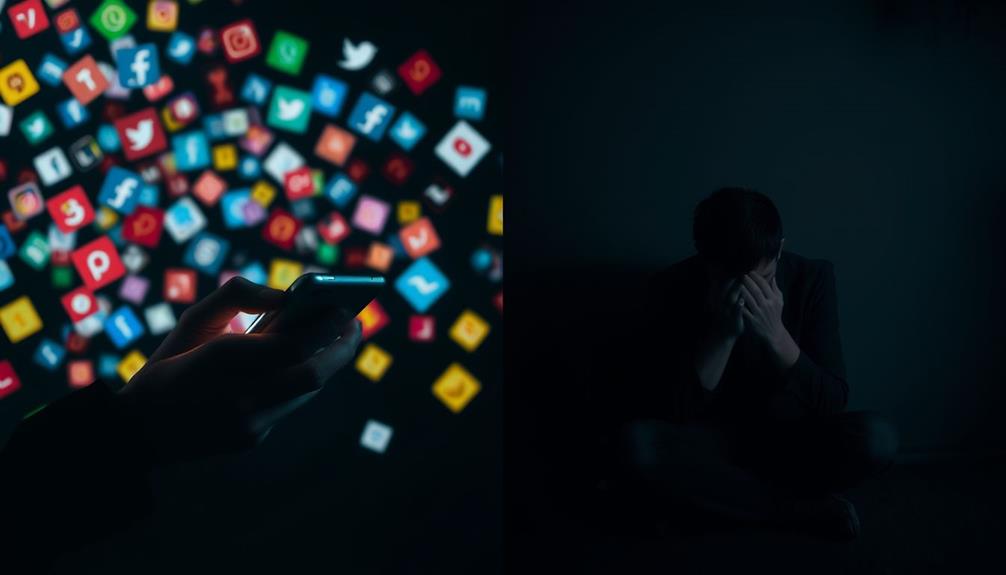
The emotional impact of social media can be profound for individuals with borderline personality disorder (BPD). You might find that interactions online trigger intense feelings of rejection and abandonment, which can lead to emotional distress and impulsive behaviors, like blocking or unfriending someone.
It's important to recognize that just as individuals with BPD can benefit from supportive interactions, they may also be affected by the negative consequences of online engagements, such as potential side effects and interactions of cold medications. It's not uncommon to experience regret after posting, as studies show a strong correlation between high BPD traits and this emotional turmoil.
Here are a few ways social media affects your emotional well-being:
- Unstable Relationships: The black-and-white thinking characteristic of BPD can result in erratic online interactions, where you may block someone over perceived criticism.
- Emotional Volatility: Exposure to distressing content, including pro-suicidal messages, can heighten your emotional struggles and increase suicide risk.
- Interpersonal Difficulties: Confusion and fallout from social media dynamics can perpetuate cycles of distress and unstable relationships.
- Mental Health Issues: The pressures of maintaining an online presence can exacerbate existing mental health issues, leading to more emotional turmoil.
Navigating social media with BPD requires awareness of these emotional impacts to foster healthier online experiences.
Therapeutic Approaches to Management

Many individuals with BPD find that therapeutic approaches can considerably improve their ability to navigate the challenges posed by social media.
Dialectical Behavior Therapy (DBT) stands out as a primary method, emphasizing emotion regulation and interpersonal effectiveness. By practicing these skills, you can mitigate the negative impacts of social media interactions that often trigger emotional distress. Additionally, incorporating essential oil remedies such as lavender or peppermint may help create a calming environment, further enhancing emotional stability during online interactions.
Cognitive Behavioral Therapy (CBT) also plays an important role. It helps you address cognitive distortions linked to social media use, allowing you to reframe your thoughts and reactions to online experiences. This can greatly reduce the emotional turmoil that arises from virtual interactions.
Mindfulness techniques taught in therapy enhance your emotional regulation, enabling you to approach social media with greater awareness. This awareness can curb impulsive behaviors like blocking or unfriending, fostering healthier online interactions.
Additionally, engaging with online support groups, such as those offered by Grouport, can provide community support while utilizing DBT principles to tackle the unique challenges faced by individuals with borderline personality disorder in the digital world.
Online Support and Community
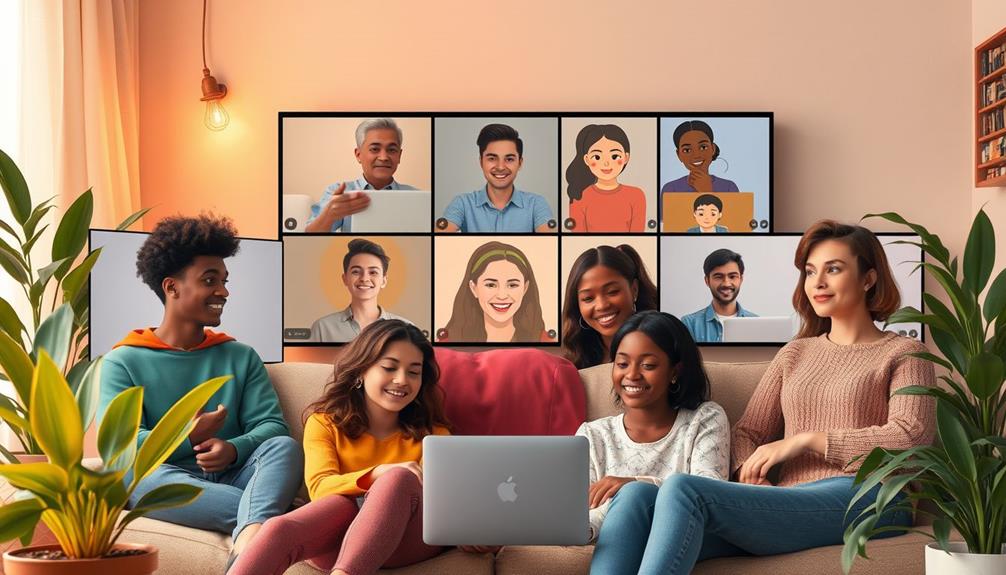
Here are four key benefits of participating in online support communities:
1. Improved Self-Esteem: Sharing your journey can help validate your feelings and experiences, boosting self-esteem.
Additionally, the use of AI-Powered Virtual Reality in E-Learning can enhance engagement in online therapy sessions, making connection more immersive and supportive.
2. Access to Coping Mechanisms: Members often exchange effective strategies for managing BPD symptoms, enriching your toolkit for coping.
3. Resources for Learning: Social media offers diverse information about BPD, empowering you to better understand your condition.
4. Enhanced Emotional Support: Connecting with others who understand your struggles fosters a sense of belonging and provides essential emotional support.
Utilizing therapeutic approaches like Dialectical Behavior Therapy (DBT) within these communities has shown a 70% rate of significant progress.
Conclusion
In traversing the turbulent waters of Borderline Personality Disorder, social media can be both a lifeboat and a storm. While it offers connection and support, it can also amplify emotional turmoil. Understanding your relationship with social media is essential; it's like learning to steer your ship through choppy seas. By practicing mindful engagement and seeking supportive communities, you can find calmer waters and better manage your symptoms, steering towards a healthier emotional horizon.
